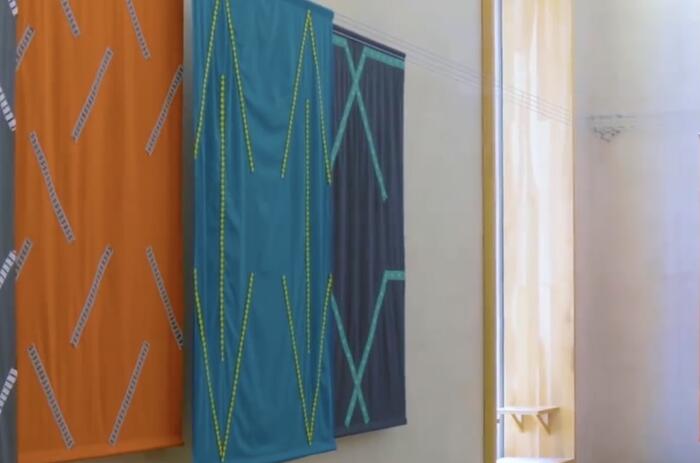BLIND SENSORIUM: A VISUAL ANTHROPOLOGY THAT QUESTIONS CLIMATE ACTION
As part of the programme of the Instituto Mutante de Narrativas Ambientales (IMNA) at Matadero Madrid, the audio-visual project Blind Sensorium is on show until 20 of May. The exhibition is the result of ten years of work that the Italian artist Armin Linke (Milan, 1966) has developed in collaboration with Giulia Bruno and Giuseppe Ielasi with the aim of configuring a visual anthropology around political, economic and technological activity and the consequences that these processes have on the planetary ecosystems.
The exhibition opened on March 12, is free of charge and has been made possible thanks to the collaboration between Matadero Madrid and the Sorigué Foundation.

Blind Sensorium is conceived on the basis of three languages that converge in a single project: documentation, photography and an audio-visual piece. Through these three elements Linke reveals to the visitor all kinds of contradictions in the relationship between the international entities destined to develop policies against the climate crisis and the ways in which their congresses are executed; the exponential advance of technologies destined for economic production and their impact on natural environments; or the dimensions of institutions oriented towards research and the high levels of consumption demanded by their installations.
On the other hand, most of the photographs and landscapes projected in the audio-visual piece construct a kind of iconography of the Anthropocene. Throughout a journey through the world's most extensive industrial centres and spaces where technology, the urban and the natural coexist, Linke's photographs turn the landscape into a strange, dehumanised scenario (paradoxically due to excessive human activity), which proposes a reflection on the ways in which we as a civilisation relate to our surroundings: not only in environmental terms, but also philosophically and aesthetically. In this sense, the Italian artist's work is part of a growing current of contemporary artists such as Adrián Villar Rojas (Rosario, Argentina, 1980) —with his documentary El teatro de la desaparición— or Julian Charriere (Morges, Switzerland, 1987) —and his latest project, Towards No Earthly Pole— and with the work that institutions such as the TBA21 foundation are developing in collaboration with a dozen contemporary artists and researchers.
Blind Sensorium is an example of the approach that contemporary artistic practices, as well as cultural institutions (mainly in Europe), are gradually generating a new space for dissemination in relation to the climate crisis and to rethink the ways in which we inhabit the world. Linke's exhibition, for example, not only does it try to generate points of contact with the spectators through images, but also through the testimonies and reflections of scientists, philosophers and researchers on the works exhibited. Among them are Ariella Azoulay, Lorraine Daston, Franco Farinelli, Bruno Latour, Peter Weibel and Jan Zalasiewicz.
The experience presented by Armin Linke at Matadero Madrid is, above all, a space that allows us to reflect not only on the questions that the project points out directly, but also on contemporary art in general. The very nature of the exhibition - between disciplines: journalistic dissemination and photography, installation and science, art and anthropology - raises questions about what we understand as art, about where artistic practices are heading in the 21st century. Linke, like other artists of his generation onwards, removes the work of art from its limited dialogue with the artistic ecosystem and places it at the centre of the political problems of our century. Blind Sensorium, among other things, vindicates the political and communicative function of art.





